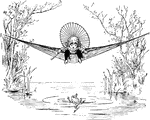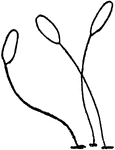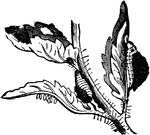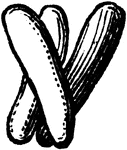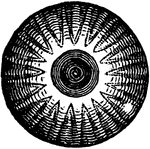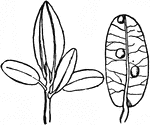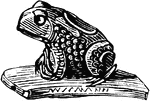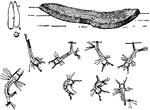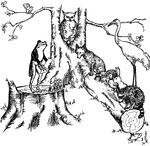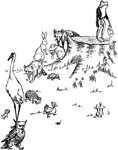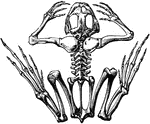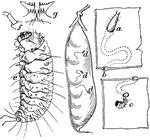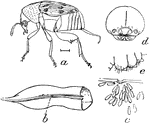
Wooly Aphid
Eriosoma Lanigera, or the Wooly Apple-Tree Blight. These insects appropriate for their generic name…

Moth Lantern
From the well known nocturnal habits of moths, and the certainty of their being destroyed by a light,…

Apple Plant Louse
The females deposit their eggs, which are small, oval, and black, on twigs and bark in the autumn; the…
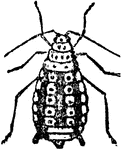
Apple Plant Louse
The females deposit their eggs, which are small, oval, and black, on twigs and bark in the autumn; the…
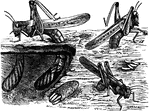
Locust
Rocky Mountain locust ovipositing. a,a, females with abdomen inserted in the soil; b, an egg-pod broken…

Katydid
The Southern Katydid, Microcentrum laurifolium- 1, the female adult; 1a, eggs laid on leaves and twigs…

Oyster-shell Scale
Oyster-shell scale, Mytilaspis Pomorum species; a female scale, from beneath, feilled with eggs.

Oyster-shell Scale
Oyster-shell scale, Mytilaspis Pomorum species; a female scale, from above, filled with eggs.

Oyster-shell Scale
Oyster-shell scale, Mytilaspis Pomorum species; a twig infested by female scales.
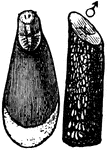
Oyster-shell Scale
Oyster-shell scale, Mytilaspis Pomorum species; a male scale and a twig infested therewith.
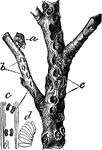
Cicada
a, Ceresa bubalus, ovipositing in slits; b, the eggs; d, arranged as at c, old, scarred punctures shown…

Bagworm
The bag-worm, Thyrtdopteryx ephemeraeformis species; bag of female cut open to show the mass of eggs.

Cranberry-Fruit
The Cranberry-fruit worm of the Mineola vaccinii species; cranberry on which the eggs are laid.

Fly
Nemorea leucaniae species, Tachinid on cut-worms; white eggs on the anterior segments of the caterpillar.

Blood Cells
Red corpuscles (blood cells) of the frog. The red blood cells of birds, reptiles, amphibians and fishes…

Capillary Network
A small portion of the capillary network as seen in the frog's web when magnified about 25 diameters.…

Circulation in a Frog's Foot
Circulation in frog's foot under a microscope. Labels: A, walls of capillaries; B, tissue of web lying…

Olfactory Epithelium
Cells from the olfactory epithelium. Labels: 1, from the frog. 2, from the man; a, columnar cell, with…
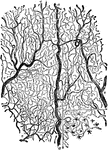
Capillary Network
A small portion of the capillary network as seen in the frog's web when magnified about 25 diameters.…

Potato Bug
An image of a potato bug, its young and eggs. The insect is native to the Rocky Mountains and thrived…

Mice in a Turtle-Drawn Carriage.
A mouse couple in their turtle-drawn carriage watching a frog post signs.
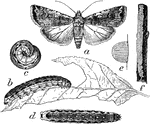
Moth, Larva, and Eggs
"Peridromia saucia: a, adult; b, c, d, full-grown larvae; e, f, eggs." -Department of Agriculture, 1899
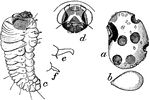
Four-Spotted Bean Weevil
"Bruchus 4-maculatus: a, cowpea, showing holes made by weevils in their escape from seed, also eggs…

Lentil Weevil
"Spermophagus pectoralis: weevil at right; Mexican bean at left showing: below, holes made by beetle…

Ant Nest
The interior of an ant nest, or formicary. The pupae are in the lower chamber, then the mature larvae,and…
